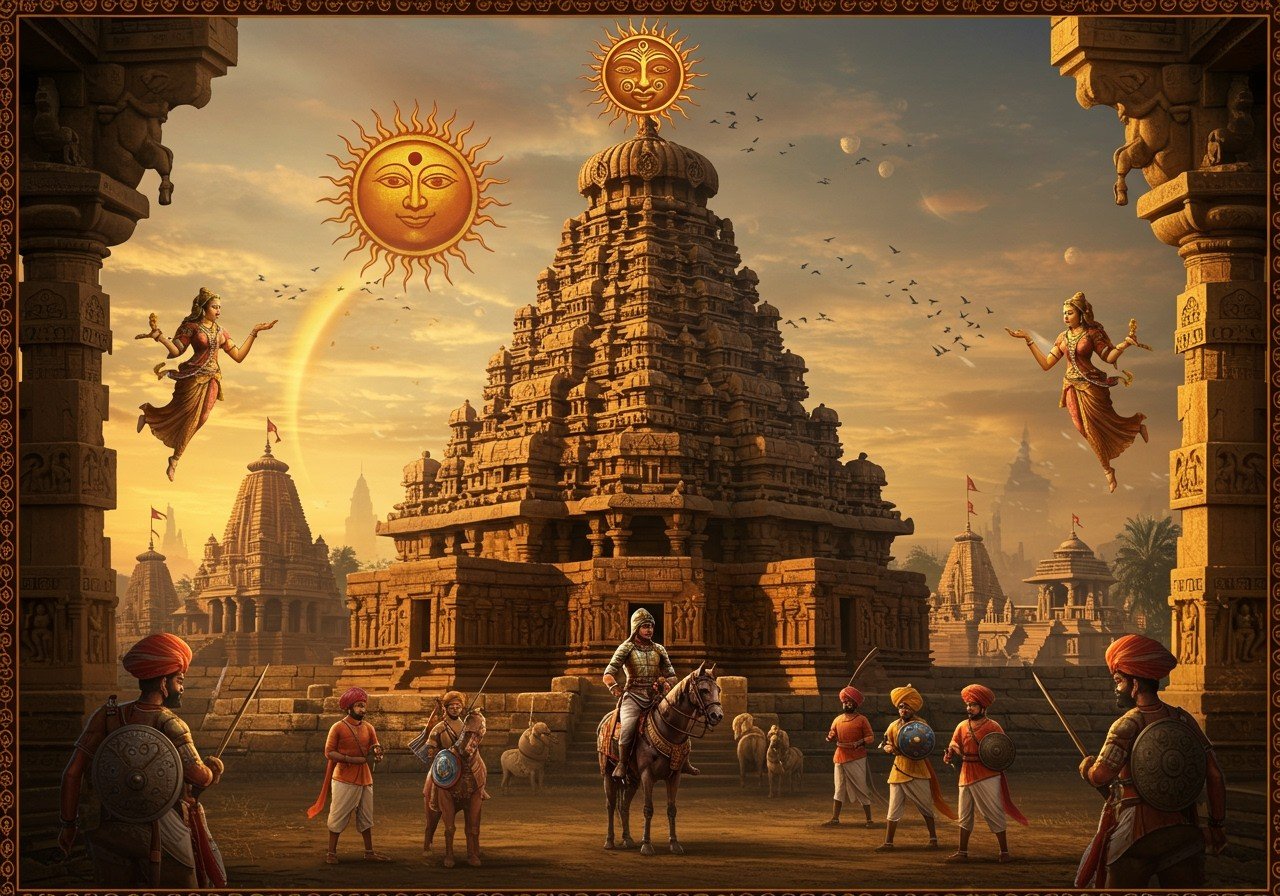
The Chalukya Dynasty stands as a cornerstone of Indian history, particularly crucial for those preparing for the UPSC exam. This dynasty, reigning between the sixth and twelfth centuries, left an indelible mark on the cultural, architectural, and administrative landscape of southern and central India. A deep understanding of the Chalukyas provides invaluable insights into India’s rich past and its influence on contemporary society.
Origins and Rise to Prominence
Emerging in the sixth century CE, the Chalukya Dynasty originated in the Deccan Plateau region of southern India. Pulakeshin I laid the foundation of this powerful kingdom, establishing their initial capital at Vatapi, present-day Badami, a strategically significant location. Their territory stretched from the Narmada River in the north to the Kaveri River in the south, encompassing a vast and influential swathe of the Indian subcontinent.
Key Figures and Their Contributions
The Chalukya Dynasty boasts a lineage of influential rulers who shaped its trajectory. Pulakeshin II, renowned for his military prowess, achieved a remarkable victory against Harshavardhana of Kanauj. Vikramaditya I further consolidated the empire and fostered cultural advancements. Kirtivarman I focused on architectural marvels, notably the construction of magnificent temples. These rulers implemented significant administrative reforms, enhancing governance, law enforcement, and overall societal well-being.
Architectural and Cultural Achievements: A Legacy in Stone and Art
The Chalukyas pioneered the Vesara style of architecture, a harmonious blend of North and South Indian elements. This innovative style is exemplified in the breathtaking Badami cave temples, the intricate Aihole temple complex, and the stunning Pattadakal monuments. These architectural wonders served as an inspiration for later Indian architectural styles, showcasing the dynasty’s enduring impact. Beyond architecture, the Chalukyas were patrons of literature and the arts, fostering the creation of notable works in Sanskrit and Kannada, enriching India’s cultural tapestry.
Explore similar architectural marvels with handcrafted puja items from Poojn.in. Discover traditional temple bells, handcrafted deepak and diyas, and other ritual items to connect with the rich cultural heritage of the Chalukya Dynasty.
Administration and Governance: Structure and Stability
The Chalukya administration was characterized by a well-structured hierarchical system. The king, advised by a council of ministers, held supreme authority. Local chieftains played a crucial role in regional governance. A sophisticated land revenue system formed the backbone of their economy. The legal and judicial systems prioritized justice and law enforcement, ensuring stability and order within the kingdom. A well-organized military, adept at strategic planning and deployment, maintained internal peace and defended against external threats, solidifying the Chalukyas’ power and influence.
Economy and Trade: Prosperity and Growth
The Chalukya economy thrived on a strong foundation of agriculture, trade, and commerce. Innovative irrigation systems boosted agricultural productivity, ensuring a prosperous agrarian sector. Trade flourished both within India and with foreign lands, further enriching the kingdom. Key trade centers like Badami, Aihole, and Pattadakal became bustling hubs of commercial activity. The Chalukyas’ economic policies promoted social development and prosperity throughout their realm.
Decline and Enduring Legacy
Internal strife, succession disputes, and external invasions eventually led to the decline of the Chalukya Dynasty. The rise of the Rashtrakutas played a significant role in their downfall. However, despite their decline, the Chalukyas left an enduring legacy that continues to shape India. Their contributions to art, architecture, and governance influenced subsequent dynasties and continue to inspire awe and admiration today.
FAQs on the Chalukya Dynasty for UPSC Preparation
Where did the Chalukya Dynasty originate? The Chalukya dynasty originated in the Deccan region of present-day India around the 6th century CE.
Who founded the Chalukya Dynasty? Pulakeshin I is recognized as the founder of the Chalukya dynasty.
What were the main branches of the Chalukya Dynasty? The Chalukya dynasty is primarily divided into three branches: the Badami Chalukyas, the Eastern Chalukyas, and the Western Chalukyas.
Which Chalukya ruler defeated Harshavardhana? Pulakeshin II, a prominent ruler of the Badami Chalukyas, is known for his victory over Harshavardhana.
What are some significant contributions of the Chalukyas? The Chalukyas made significant contributions to architecture, particularly the Vesara style, exemplified by temples at Badami, Aihole, and Pattadakal. They also fostered art, literature, and a well-structured administrative system.
Enhance your understanding of Chalukyan culture with authentic puja items from Poojn.in. Explore our collection of pure cotton asans, copper kalashes, and traditional thali sets to create a sacred space for your studies.
Why is studying the Chalukya Dynasty important for the UPSC exam? The Chalukya Dynasty is an integral part of the UPSC History syllabus. Understanding their reign, contributions, and impact is essential for a comprehensive understanding of ancient Indian history.
What resources can I use to prepare for the Chalukya Dynasty section of the UPSC exam? NCERT textbooks, specialized history books, online resources, and previous years’ question papers are valuable resources for UPSC preparation. For a deeper understanding, consider exploring the rich collection of Poojn.in‘s cultural and religious products related to ancient Indian traditions.
Conclusion: The Enduring Significance of the Chalukyas
The Chalukya Dynasty’s legacy resonates through the magnificent temples, the innovative Vesara architectural style, and their contributions to administration and governance. Their story is a testament to India’s rich and complex past, a blend of tradition, innovation, and enduring cultural influence. As you prepare for the UPSC exam, let the story of the Chalukyas deepen your appreciation for the complexities and beauty of Indian history.


